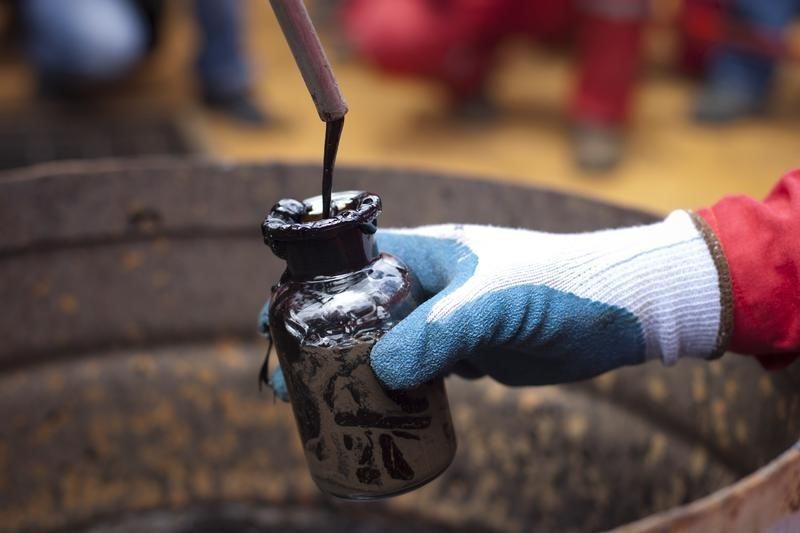By Barani Krishnan
Investing.com - It's that typical time of the week when the market gets a grip ahead of inventory data, Libya and Iran issues notwithstanding.
With Wall Street rattled by President Donald Trump's latest barrage on trade -- this time with the EU -- hedge funds are holding up their bullish charge to see what the weekly supply-demand snapshot from the American Petroleum Institute will bring in before Wednesday's official numbers.
New York-traded West Texas Intermediate crudesettled down 42 cents, or 0.7%, at $63.98 per barrel after hitting $64.78 earlier, its highest since November.
London-traded Brent crude, the global benchmark for oil, slipped by 45 cents, or 0.6%, to $70.65, retreating from a five-month high of $71.34.
Year to date, WTI is up 41%, while Brent has gained 31%.
"The market must be wary of this week’s oil inventories" even as traders were "pricing a very tight market", said Phil Flynn, senior analyst at the Price Futures Group brokerage in Chicago.
"We should see about a 2-million-barrel increase in crude supply and a drop of about 2.5 million barrels on the product side," Flynn added, citing the many issues in the Houston Ship Channel after weather problems and a chemical plant fire threw data issued by the Energy Information Administration over the past two weeks out of whack.
The EIA reported a crude inventory build of 2.8 million barrels for the week ended March 22 and 7.3 million in the subsequent week to March 29, versus drawdowns anticipated by the market.
API's numbers often diverge with those of the EIA. But the agency's reports are still closely followed as a precursor to what the official data could be. Analysts will be able to see if they are close with their consensus for a 2.5-million-barrel build for the week ended April 5. The API releases its numbers at 4:30 PM ET (20:30 GMT).
Away from the inventory watch, the undercurrents of the oil rally seem intact.
In Libya, forces loyal to renegade general Khalifa Haftar continued their advance on the capital, striking Tripoli's only working airport and ignoring international calls for a truce. Haftar's forces are already in control of oil fields that produce half or more of Libya's total output of about 1.1 million barrels of crude a day.
Any disruption in Libyan oil volumes will further squeeze a global crude market already in panic mode from U.S. sanctions against Iran and Venezuela.
Trump upped the U.S. ante against Iran by designating the Iranian Islamic Revolutionary Guard as a foreign terrorist organization.
While the labeling brings an "additional level of uncertainty for any individual doing any transaction with Iran" and "should strengthen the U.S. economic pressure on Iran", it also raises tensions that feed to higher prices, said Olivier Jakob, managing director at PetroMatrix in Zug, Switzerland.
Offsetting some of the bullish fervor were remarks Tuesday by Russian President Vladimir Putin that Moscow wasn't decided on its cooperation with OPEC on production cuts ahead of meetings in May and June. There has been much speculation that Russia wants to raise output at prices north of $70 per barrel.
Scott Shelton, energy futures broker at ICAP (LON:NXGN) in Durham, N.C., said hedge funds long on oil were largely undeterred in their buying.
"I underestimated the effect of the trend followers and momentum followers in the market, who could care less about supply and demand and OPEC capacity," Shelton said. "What I should have cared about was the capacity of CTA buying, like many did when prices went under $50."
